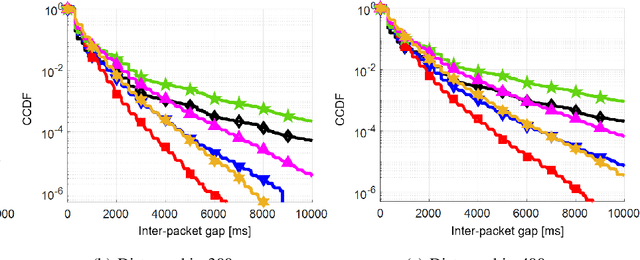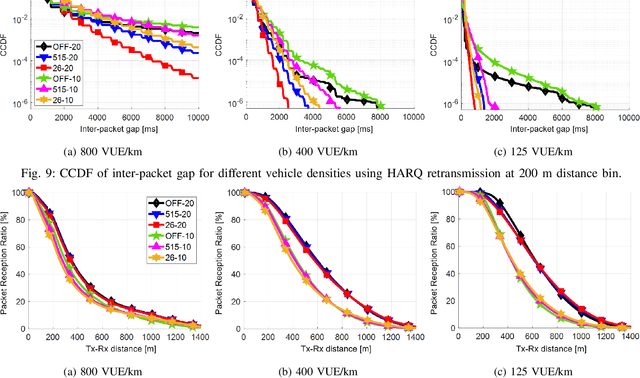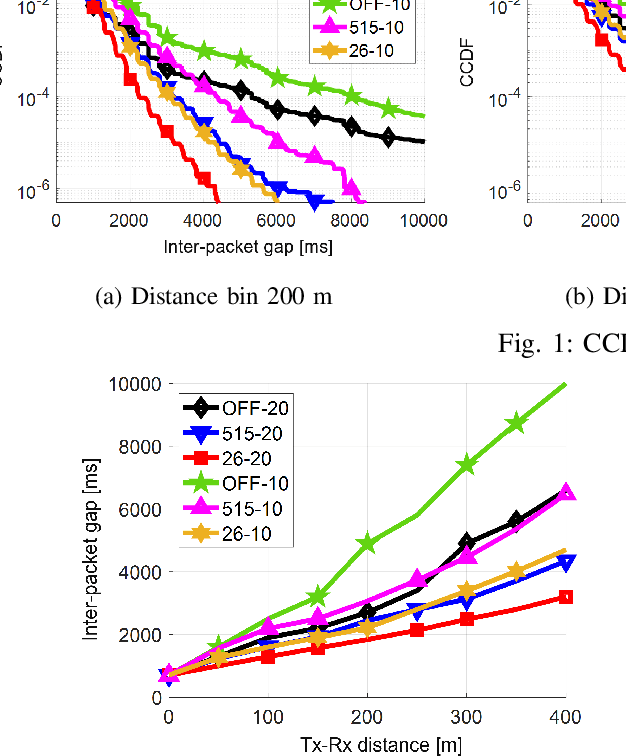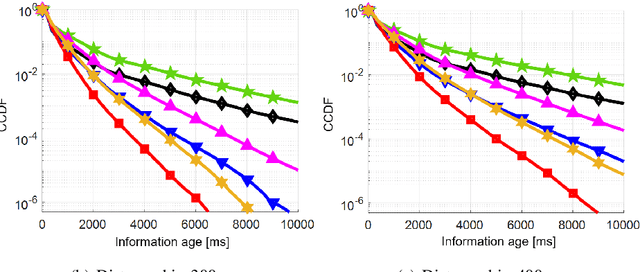Interleaved One-shot Semi-Persistent Scheduling for BSM Transmissions in C-V2X Networks
Paper and Code
Sep 30, 2021



Cellular vehicle-to-everything (C-V2X) networks are regarded as one of the main pillars to enable efficient and sustainable Intelligent Transportation Systems (ITS) safety applications and services. Such services rely on the concept of exchanging periodic status updates (i.e., basic safety messages (BSMs)) between nearby vehicular users (VUEs). Hence, it is essential to ensure small inter-packet gaps (IPGs) between successive BSMs from nearby VUEs. Large IPGs, due to successive packet losses, can result in stale information at a VUE. In this paper, we study the tail behavior of the IPG and the information age (IA) distributions using C-V2X transmission mode 4 (a decentralized resource allocation method based on semi-persistent scheduling (SPS)). Specifically, we investigate improvements and trade-offs introduced by the SAE-specified concept of one-shot transmissions. We use a high-fidelity system-level simulator that closely follows the SPS process of C-V2X transmission mode 4 to evaluate the performance of the interleaved one-shot SPS transmissions. Our numerical results show that the tails of the IA and IPG complementary cumulative distribution functions (CCDFs) are significantly improved when one-shot transmissions are enabled in various simulation scenarios.
 Add to Chrome
Add to Chrome Add to Firefox
Add to Firefox Add to Edge
Add to Edge